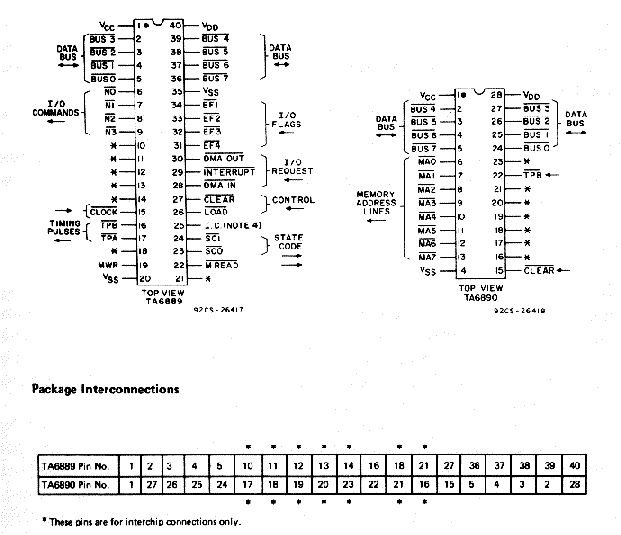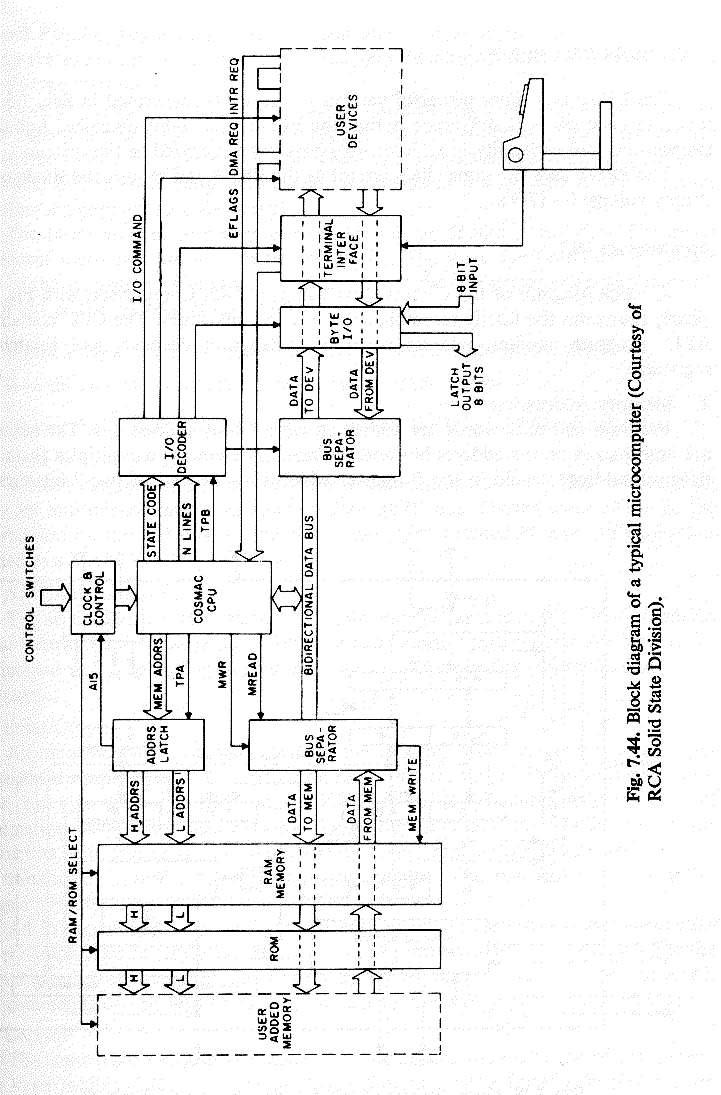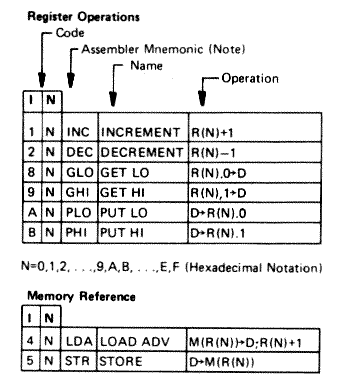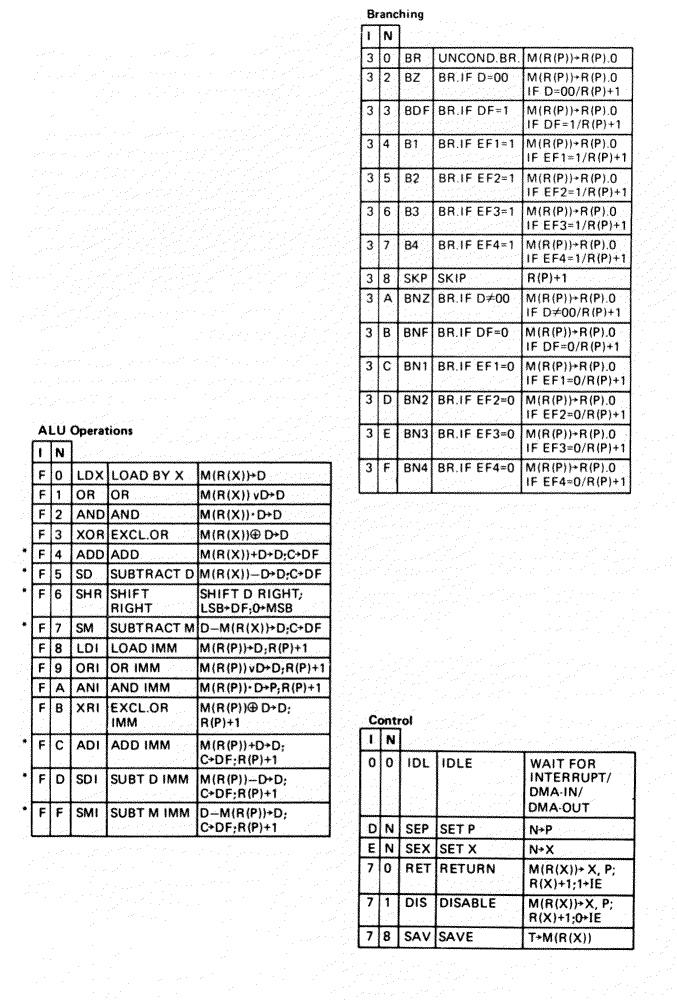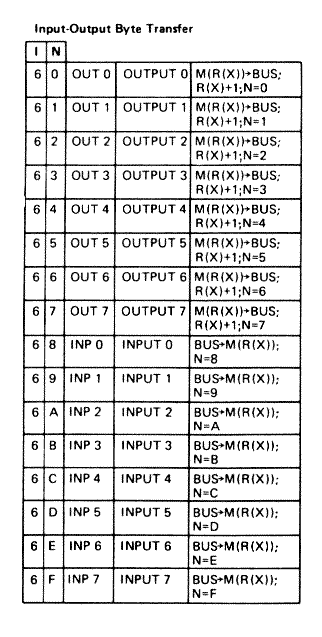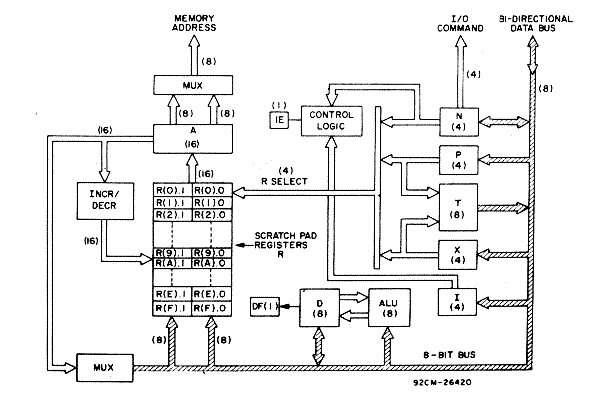
Fig. 7.41. Block diagram of the RCA COSMAC (Courtesy of RCA Solid State Division).

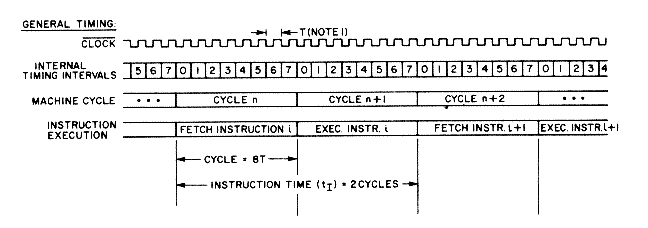
|
|
||
| Register | No. of Bits | Function |
|
|
||
| D | 8 | Data register (accumulator) |
| DF | 1 | Data flag (ALU carry) |
| R | 16 | 1-of-16 scratch-pad registers |
| P | 4 | Designates program counter R(P) |
| X | 4 | Designates data pointer R(X) |
| N | 4 | Low-order instruction digit |
| I | 4 | High-order instruction digit |
| T | 8 | Temporary register; holds old X and P after interrupt |
| IE | 1 | Interrupt enable |
|
|
||
